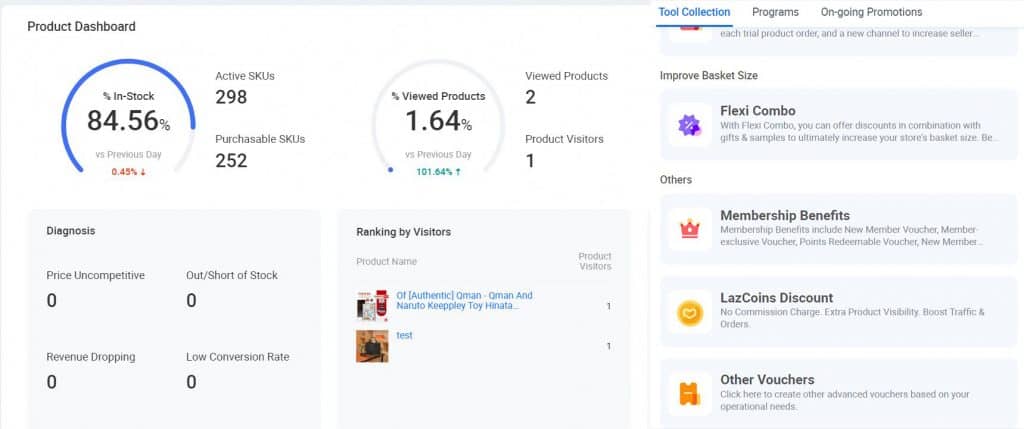In fair economic weather, managing an eCommerce business can already be considered pretty challenging as most sellers would know. It’s hard work but can be equally rewarding with a decently swift return on investment (ROI). When a recession hits, however, it can be tough to ride out a season of low profits. Consumers spend less when they’re worried about losing jobs so sellers’ orders dry up. Additionally, inflation spikes costs of production and overheads such as electricity, hitting sellers much harder.
Recessions don’t last forever though and sellers would do well to strategize how to shield themselves during tough economic times. In some extraordinary cases, it’s possible to even capitalize on a recession. Read on to gain some practical tips on how to sustain an eCommerce business during a recession:

1. Diversify the selection of your product offerings
Offering just one product is unwise in tough times when consumers are picky about what they spend on. Eliminate the risk of placing all your eggs in one basket by diversifying your product offerings. Diverse products result in diverse revenue streams. A variety of products sold at different price points can even attract new customers and increase overall sales volumes!
While diversifying, be mindful to stay true to your core business. Existing customers love a sense of familiarity and have attached an affinity for your brand values. Look for recession-proof items that fall within your brand’s unique selling proposition and your online store’s category. Next, harness your expertise to develop or extend the varieties of your existing product with the needs of your existing market in mind.
Inspiration: Take The Fisherman for example. Led by two sisters, the Lazada store supplements its core product of dried seafood with other yummy dried edibles such as noodles, mushroom, and goji berries.

2. Use data insights to make marketing decisions
While striving to keep one’s business thriving when consumers are struggling, an entrepreneur must avoid wasting his or her largest asset: time. One winning strategy to save time in your marketing efforts is by using data. Leverage data such as dashboard analytics offered by the Lazada Seller Center to improve efficiency and reduce costs.
How this works is that you get up-to-date information on how many visitors and how much revenue is generated by each product. From there, you can pick out your bestsellers and curate promotions using promotional tools such as Free Shipping, Store Follower Voucher, and Flexi Combo where a higher purchase awards higher savings. You can even bump up your bestsellers’ visibility by doing Flash Sales.
The best part about picking the right products to target your marketing efforts towards allows you to identify the types of products that you can further develop or supplement with related items. Ultimately, you will get to boost your check out rates, conversion, and sales!

3. Enhance customer service to improve retention
Acquiring new customers can be challenging when consumer expenditure is reduced due to higher prices. What you can do is to create a lasting impact in the minds of your customers, be it existing ones or new ones. Offer exceptional customer service that shows dedication and care to the needs of your customer.
Be responsive, kind, patient, and provide useful information akin to a consultant – regardless of the purchase value. These traits will create a positive shopping experience, leaving an impression that your online store is welcoming and professional.
Once the sale is closed and the product is delivered, you can apply personalized marketing
by sending short and sweet messages to encourage repeat purchases. Lastly, don’t forget to share the reviews of your happy customer. Feature impactful positive reviews under relevant products in your eCommerce store so that new buyers can learn more about usages and benefits.
4. Explore New Sales Channels via Social Media
Social media platforms can serve as fantastic sales channels that can uphold your profits from little to no cost. Before laying out plans to market your eCommerce store on social media, identify the SocMed platforms where your existing customers and target audience spend their most time.
For instance, people in their mid-30s and above love Facebook, millennials love Instagram (IG) , and Gen Z loves both IG and TikTok. WeChat or LINE can also be an option to consider. Focus your efforts on building a presence on these platforms to increase your visibility and reach.
Let’s take Instagram as an example. An IG business account is interactive, visually aesthetic, and garners high traffic. The reviews and feedback in the comments serve to assure potential customers that you are a genuine and approachable seller. Be sure to link your eCommerce shop in your IG description and use the “View Shop” feature to spotlight your newest arrivals just like nipperisdabest.
Biz Tip: Don’t forget to take advantage of unique shopper affiliate programs such as Laz Affiliate. Fans and loyal customers of your brand get to promote any of your products on any social media platform of their choice. Using a one-of-a-kind affiliate link to promote, an affiliate earns commission if anyone buys your products using the link.
5. Build a long-term relationship with your suppliers
Lastly, do not overlook the importance of building a good relationship with your suppliers. With mutual understanding and trust, your suppliers are more likely to agree on favorable terms such as supplying goods on credit or at a bulk discount. Here are some wonderful ways to build a good rapport with your suppliers:
- Be punctual in your payments be it weekly or monthly. If delay is anticipated, communicate this to your supplier ahead of time. This shows that you are a responsible and reliable paymaster.
- Be polite and respectful at all times. Remember to keep your temper under control even when things do not go according to plan.
- Be clear in your communications to avoid any delays or misunderstandings. This reduces dissatisfaction and avoids re-delivery of raw materials.
- Try not to constantly change your orders arbitrarily, especially at the last-minute. This can cause additional administrative time and efforts that go above and beyond your supplier’s usual responsibilities. While this does not appear to be bad practice, capriciousness may be perceived as being challenging to serve.









